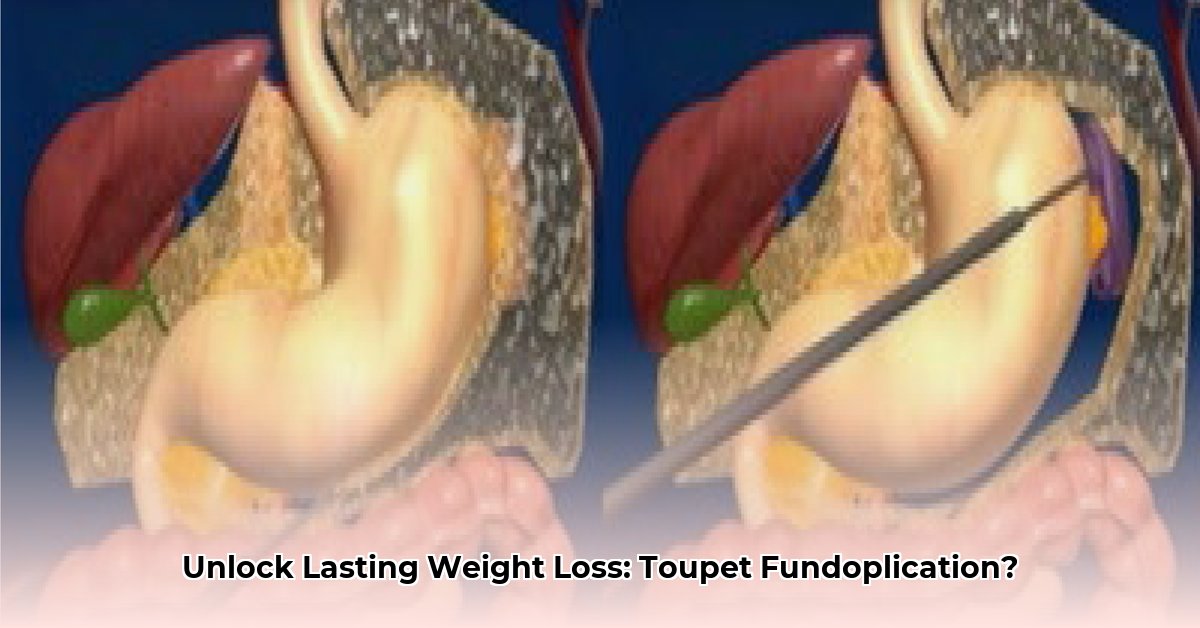
Losing weight and keeping it off is a significant challenge for many. For individuals with gastroesophageal reflux disease (GERD), surgery may offer a solution. This review examines laparoscopic Nissen fundoplication (LNF) and its efficacy in achieving and maintaining weight loss, focusing on the impact of body mass index (BMI) and long-term outcomes. We also compare it to the Toupet fundoplication, a similar procedure. This analysis aims to provide a balanced overview for both medical professionals and patients considering this surgical intervention.
Understanding the Procedures
LNF and Toupet fundoplication are surgical techniques designed to treat GERD, a condition where stomach acid flows back into the esophagus. Both procedures involve wrapping a portion of the stomach around the lower esophageal sphincter (LES), tightening the valve and preventing acid reflux. The key difference lies in the extent of the wrap; the Toupet fundoplication uses a partial wrap, while the Nissen uses a complete wrap. This subtle difference may influence long-term outcomes and weight management, a topic requiring further investigation.
BMI and Surgical Outcomes: A Complex Relationship
While short-term outcomes for LNF generally appear similar across various BMI categories, long-term success rates are more nuanced. Numerous studies suggest a correlation between higher BMI and a greater risk of GERD recurrence after LNF. This is possibly attributable to increased intra-abdominal pressure exerted by excess weight, placing stress on the surgically repaired LES. However, the literature presents conflicting results, highlighting the need for larger, longer-term, and more methodologically consistent studies.
Short-Term Outcomes: Initial Success
Short-term data show similar operative times, complication rates, and early recovery periods across different BMI categories. This suggests that the initial surgical success of LNF is largely independent of a patient's weight. However, this is a crucial first step before focusing on longitudinal effects.
Long-Term Outcomes: The Importance of Weight Management
The long-term picture is less clear-cut. While some studies indicate a strong negative association between pre-operative BMI and long-term success, others find no significant correlation. This discrepancy underscores gaps in the current research. The inconsistency may be partially explained by variations in surgical techniques, study populations, and follow-up methods. The question remains: Does post-operative weight gain independently influence long-term LNF outcomes? Further investigation into the interplay between BMI, surgical technique, post-operative weight management, and efficacy is needed to answer this question.
Limitations of Current Research
Existing research presents several limitations. Many studies rely on patient-reported outcomes (PROs), such as heartburn severity, which may lack objectivity. More rigorous assessments, including objective measures of reflux such as pH monitoring, are needed to improve the reliability of findings.
Implications for Stakeholders
The current understanding of LNF's effectiveness in relation to BMI has significant implications for all stakeholders.
Patients: Open communication with surgeons regarding the potential benefits and limitations of LNF, especially concerning long-term outcomes and the influence of BMI, is crucial. Realistic expectations are paramount.
Surgeons: Clinicians should carefully consider patient selection, taking BMI and related factors into account. Optimizing surgical techniques and providing comprehensive post-operative care, including strategies for weight management, are essential for improving long-term success rates.
Healthcare Systems: Resource allocation for pre and post-operative care should reflect the potential for longer operative times, increased complication rates, and the need for specialized support in higher BMI patients.
Actionable Recommendations
The following recommendations are targeted at improving long-term outcomes for LNF:
Refined Surgical Techniques: Further research is needed to develop optimized techniques, potentially including modifications to surgical approach or suture materials, specifically for obese patients.
Comprehensive Patient Selection: Pre-operative assessments should thoroughly evaluate patient factors, such as BMI, comorbidities, lifestyle, and adherence capabilities to post-surgical recommendations.
Post-Operative Weight Management Strategies: Successful long-term outcomes heavily rely on effective weight management programs that are implemented before and after surgery. Addressing this element will yield greater success.
Multidisciplinary Care: A cohesive approach involving surgeons, gastroenterologists, dieticians, and other relevant healthcare professionals is critical in achieving meaningful improvement in outcomes.
Conclusion: The Path Forward
The relationship between BMI and long-term success after LNF remains complex and requires further investigation. While initial outcomes appear generally positive regardless of BMI, long-term efficacy is significantly influenced by various factors. Addressing these challenges requires a multi-faceted approach incorporating refined surgical techniques, comprehensive pre-operative assessments, robust post-operative weight management strategies and collaboration amongst medical professionals. By strengthening these areas, we can drive improvements in the long-term efficacy of LNF for all patients, particularly those with higher BMIs.